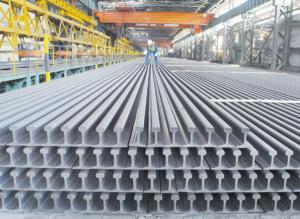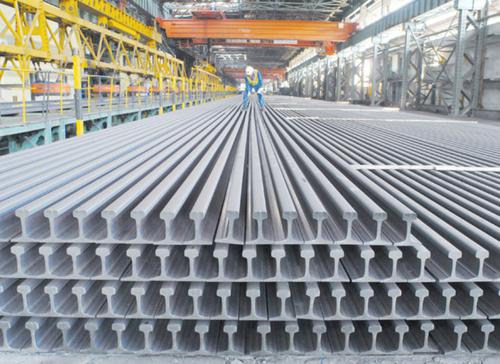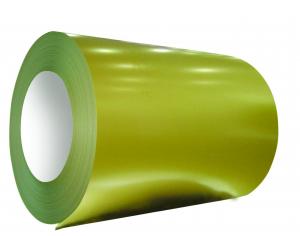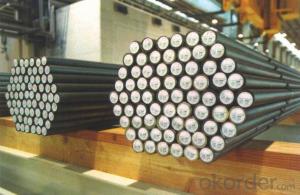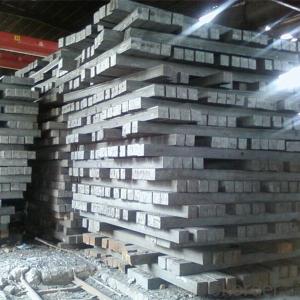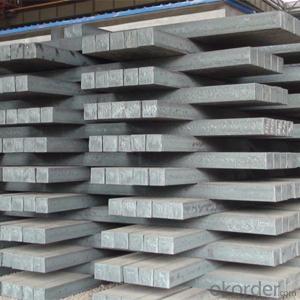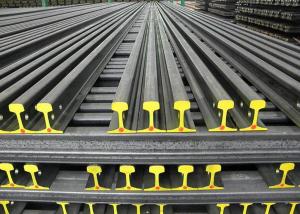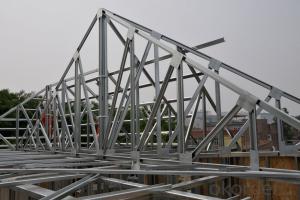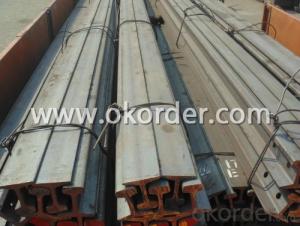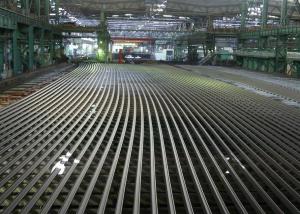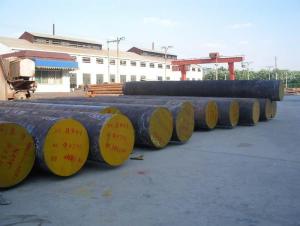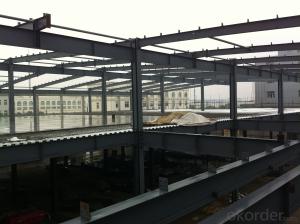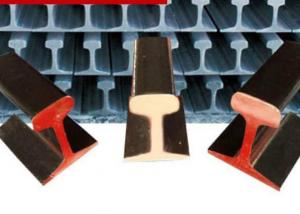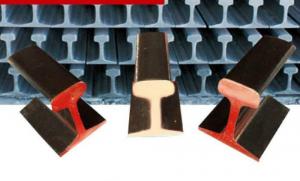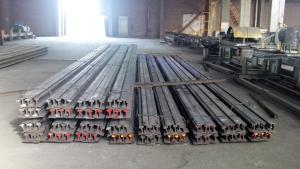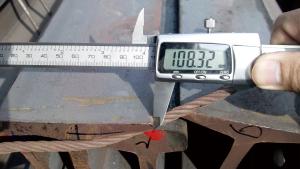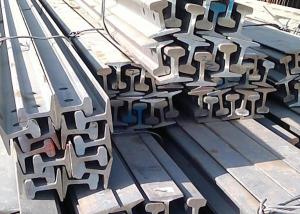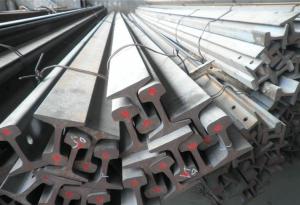Steel Light Rail wfith High Quality for Construction
- Loading Port:
- China main port
- Payment Terms:
- TT or LC
- Min Order Qty:
- 25 m.t.
- Supply Capability:
- 100000 m.t./month
OKorder Service Pledge
OKorder Financial Service
You Might Also Like
Specifications of Steel Light Rail wfith High Quality for Construction:
Production Standard: GB11264-89
Material: Q235, 55Q
Grade | Element(%) | ||||
C | Mn | S | P | Si | |
Q235 | 0.12—0.20 | 0.3—0.7 | ≤0.045 | ≤0.045 | ≤0.3 |
55Q | 0.50—0.60 | 0.70—1.00 | ≤0.050 | ≤0.045 | 0.15-0.35 |
Sizes: 9kg, 12kg, 15kg, 22kg, 30kg
Length: 6M, 8M, 10M, 12M or as the requriement
Invoicing on theoretical weight or actual weight as customer request
Payment terms: 30% advance payment by T/T, 70% payment against the copy of the B/L; 100% L/C at sight, etc.
Applications of Steel Light Rail wfith High Quality for Construction:
Light Steel Rail is mainly used in forest region, mines, factories and construction sites laid of the place such as temporary transport line and light motorcycles with line, for example:
railway, subway, transportation track, express, curve way, tunnel way.
Package & Delivery of Steel Light Rail wfith High Quality for Construction:
1. Package: it is nude packed in bundles by steel wire rod
2. Bundle weight: not more than 3.5MT for bulk vessel; less than 3 MT for container load
3. Marks:
Color marking: There will be color marking on both end of the bundle for the cargo delivered by bulk vessel. That makes it easily to distinguish at the destination port.
Tag mark: there will be tag mark tied up on the bundles. The information usually including supplier logo and name, product name, made in China, shipping marks and other information request by the customer.
If loading by container the marking is not needed, but we will prepare it as customer request.
4. Transportation: the goods are delivered by truck from mill to loading port, the maximum quantity can be loaded is around 40MTs by each truck. If the order quantity cannot reach the full truck loaded, the transportation cost per ton will be little higher than full load.
5. Delivered by container or bulk vessel
6. Delivery Time: All the Hot Rolled Steel Rail will be transpoted at the port of Tianjin, China within 30 days after receiving the advance payment by T/T or the orginal L/C at sight.
Production flow of Steel Light Rail wfith High Quality for Construction:
Material prepare (billet) —heat up—rough rolling—precision rolling—cooling—packing—storage and transportation
FAQ:
Q1: How do we guarantee the quality of our products?
A1: We have established an advanced quality management system which conducts strict quality tests at every step, from raw materials to the final product. At the same time, we provide extensive follow-up service assurances as required.
Q2: How soon can we receive the product after purchase?
A2: Within three days of placing an order, we will begin production. The specific shipping date is dependent upon international and government factors, but is typically 7 to 10 workdays.
Q3: What makes stainless steel stainless?
A3: Stainless steel must contain at least 10.5 % chromium. It is this element that reacts with the oxygen in the air to form a complex chrome-oxide surface layer that is invisible but strong enough to prevent further oxygen from "staining" (rusting) the surface. Higher levels of chromium and the addition of other alloying elements such as nickel and molybdenum enhance this surface layer and improve the corrosion resistance of the stainless material.
Images:
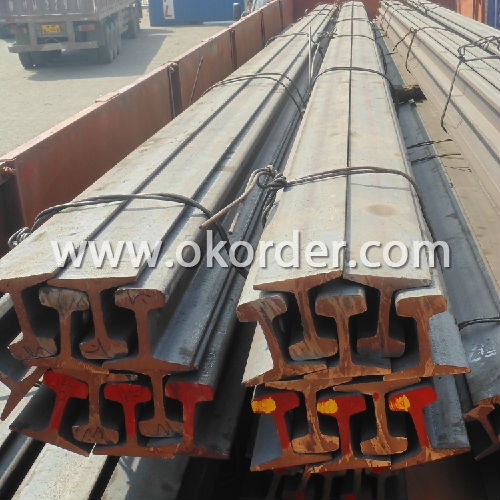
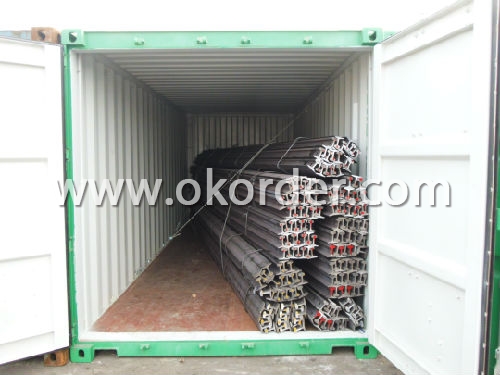
- Q: How are steel rails protected from excessive noise?
- Various methods can be employed to protect steel rails from excessive noise. One approach commonly used is the utilization of rail dampers or rail pads. These materials, placed between the rail and the sleeper, absorb and diminish vibrations and noise caused by passing trains. Rail dampers, typically made of rubber or other elastomeric materials, effectively isolate the rail from the sleeper, thereby reducing noise transmission. Additionally, noise control can be achieved through rail grinding, which involves the removal of irregularities and imperfections from the rail's surface. These irregularities can contribute to heightened noise levels. By smoothing the rail, friction is minimized, resulting in reduced noise during train operations. Furthermore, noise reduction is also dependent on the implementation of effective rail fasteners. Modern rail fastening systems, such as resilient fasteners or elastic clips, are specifically designed to absorb and dampen vibrations. These fasteners provide flexibility to the rail, enabling it to absorb energy and minimize noise transmission. Moreover, the installation of noise barriers alongside railway tracks can significantly decrease noise pollution. These barriers, constructed from materials like concrete or metal, serve as sound-absorbing walls, effectively blocking or deflecting noise generated by passing trains. Overall, a combination of rail dampers, rail grinding, resilient fasteners, and noise barriers ensures the protection of steel rails from excessive noise. These measures aim to minimize vibrations, absorb energy, and create barriers to noise transmission, thereby creating a quieter and more comfortable environment for nearby residents and passengers alike.
- Q: Are steel rails affected by changes in ground moisture content?
- Yes, steel rails can be affected by changes in ground moisture content. When the ground moisture content fluctuates, it can lead to changes in the stability and strength of the ground beneath the rails. This can result in movement or shifting of the rails, known as track buckling or track deformations, which can pose safety risks and impact the smooth operation of trains. Therefore, monitoring and managing ground moisture levels is important to ensure the integrity and stability of steel rails.
- Q: Can steel rails be used in areas with high winds?
- Yes, steel rails can be used in areas with high winds. Steel is a strong and durable material that can withstand various weather conditions, including high winds. The design and installation of steel rails take into consideration the environmental factors of the area, including wind load calculations and proper anchoring techniques. Additionally, steel rails are often used in areas prone to hurricanes or other strong wind events, where they have proven to be reliable and capable of withstanding the forces exerted by high winds.
- Q: What is the standard length of a steel rail?
- The standard length of a steel rail can vary depending on the specific application and country. However, in many cases, the standard length of a steel rail is typically around 39 feet (12 meters) or 78 feet (24 meters).
- Q: How are steel rails protected against electrical conductivity issues?
- Steel rails are protected against electrical conductivity issues through a process known as rail bonding. Rail bonding involves the installation of electrical conductors or bonds that connect different sections of the rail together, creating a continuous path for electrical current to flow. This helps to prevent the buildup of electrical potential differences between rail sections, which can cause arcing, electrical interference, and other conductivity issues. Rail bonding is typically achieved using bonding wires or cables, which are securely attached to the rail at regular intervals. These wires or cables are made of materials with high electrical conductivity, such as copper or aluminum, and are designed to withstand the mechanical stresses and environmental conditions that the rail may experience. By providing a low-resistance path for electrical current, rail bonding helps to minimize the risk of electrical interference and other conductivity issues. It also helps to ensure the safe operation of signaling and communication systems that rely on the rail infrastructure. In addition to rail bonding, other measures such as periodic inspection and maintenance of the rail, including cleaning and removing any contaminants that could affect conductivity, are important to maintain optimal electrical performance. Regular testing and monitoring of the rail's electrical conductivity also play a crucial role in identifying and addressing any potential issues before they can cause disruptions or safety hazards. Overall, the protection of steel rails against electrical conductivity issues is a multifaceted approach that involves the use of bonding wires or cables, regular maintenance, and monitoring to ensure the safe and reliable operation of rail systems.
- Q: What is the rail dispersion?
- The concrete way is to make all the rail fasteners loose, and use the drum to pad the rail and hit the rail with a rail collision device. When the rail reaches the designed rail temperature, the fastener is quickly tightened and the line is locked. When the rail temperature is lower than the designed rail temperature, the rail pulling device can be used to draw the rail and tighten the fastener.
- Q: How do steel rails handle train vibrations?
- Steel rails are specifically designed to handle train vibrations efficiently. The material properties of steel make it an ideal choice for railway tracks as it possesses high strength, durability, and resilience. When a train passes over the rails, it creates vibrations due to the interaction between the wheels and the track. Steel rails are able to handle these vibrations in several ways. Firstly, the high strength of steel allows it to withstand the immense weight and force exerted by the train. This prevents the rails from deforming or breaking under the load, ensuring the track remains intact. Additionally, steel rails have a high level of stiffness, which helps to minimize the vibrations transmitted to the surrounding environment. The stiffness of the rails allows them to absorb and distribute the vibrations along the track, reducing the impact on nearby structures and minimizing noise pollution. Moreover, steel rails are carefully engineered to have specific profiles and dimensions that optimize their ability to handle train vibrations. The rail profiles are designed to provide a smooth and stable surface for the train wheels, minimizing any unevenness or irregularities that could lead to excessive vibrations. The dimensions of the rails are also chosen to ensure proper alignment and stability, further reducing the potential for vibrations. Furthermore, regular maintenance and inspection of steel rails play a crucial role in ensuring their ability to handle train vibrations. Frequent inspections help to identify any defects or damage, such as cracks or wear, which could compromise the rail's ability to handle vibrations. Timely repairs and replacements are then carried out to maintain the integrity of the track. In conclusion, steel rails are specifically designed and engineered to effectively handle train vibrations. Their high strength, stiffness, and carefully designed profiles allow them to withstand the weight and force of trains while minimizing vibrations and ensuring a smooth and stable ride for passengers. Regular maintenance and inspection further contribute to their ability to handle vibrations and ensure the safety and efficiency of railway operations.
- Q: How are steel rails protected against fatigue?
- Steel rails are protected against fatigue through a combination of design measures and maintenance practices. These include using high-quality steel with appropriate chemical composition and mechanical properties, ensuring proper rail alignment and support, regularly inspecting and repairing any defects or damages, applying protective coatings or treatments, and implementing periodic rail grinding to remove surface defects and improve the overall condition of the rails. These measures help to enhance the durability and longevity of steel rails, minimizing the risk of fatigue and ensuring safe and efficient railway operations.
- Q: What are the specifications for steel rail drainage systems?
- The specifications for steel rail drainage systems typically include factors such as the size and grade of steel rails, the design and dimensions of the drainage channels, the slope and gradient requirements, and any necessary coatings or treatments to prevent corrosion. Additionally, specifications may also outline requirements for proper installation, maintenance, and safety features.
- Q: What are the safety regulations for steel rail installation?
- The safety regulations for steel rail installation typically include ensuring proper alignment and spacing of the rails, securing the tracks to the sleepers or ties, conducting regular inspections and maintenance, implementing appropriate signaling and communication systems, and following specific procedures for welding or joining the rails. Additionally, safety measures may include providing adequate training and personal protective equipment for workers involved in the installation process and adhering to relevant local or national safety standards and guidelines.
Send your message to us
Steel Light Rail wfith High Quality for Construction
- Loading Port:
- China main port
- Payment Terms:
- TT or LC
- Min Order Qty:
- 25 m.t.
- Supply Capability:
- 100000 m.t./month
OKorder Service Pledge
OKorder Financial Service
Similar products
Hot products
Hot Searches
